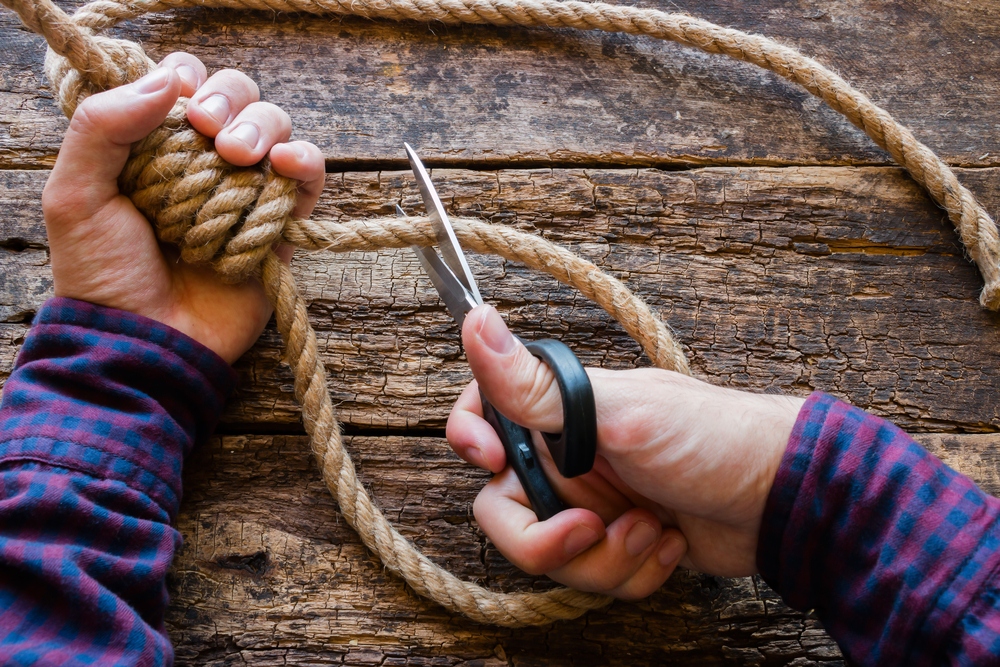
itakdalee/Shutterstock
.
It is clear that suicide is a nationwide problem, but it seems especially so here in Utah. According to the Utah Department of Health, suicide is the leading cause of death for people ages 10 to 17. Our youth are not receiving the help they need. Our community must do more to address the prevention of such a devastating choice.
The three most commonly used suicide prevention programs in Utah schools are: Question, Persuade and Refer (QPR), a training program; Hope Squad, a peer-to-peer outreach effort, and Hope for Tomorrow, which is focused on mental health education. While these programs have an impact, they are incomplete, as Utah does not yet employ any programs specifically to teach skills to combat and prevent suicide.

Lexie Kay Corbett
Because we understood this serious problem, board members and I at SALT Contemporary Dance brainstormed on how we could work on this issue and came up with an innovative approach to suicide prevention. With our knowledge of the powerful effects of movement and dance therapy, and with our experience of watching youth use movement to work through complex problems, we knew we could develop an effective outreach program.
Thinking about the popularity of escape rooms today, we felt it fitting to use this theme to motivate youth to be involved. As our board is composed of dancers, instructors and business professionals, we felt we needed to reach out for industry guidance and validation in our planning.
We met with a local licensed social worker who specializes in youth depression intervention. With this advice, and after many sessions in the studio with our dancers and guest children, we developed Creative Escape, a full student-body lecture demonstration and/or 10 classroom sessions where students K-12 are empowered to find creative solutions to complex problems through fun and interactive movement-oriented escape room scenarios.
Fun way to teach problem-solving
Through this innovative and fun movement therapy program, youth learn to overcome complex physical challenges and become better equipped to navigate the mental and emotional struggles they will undoubtedly encounter in their lives. They learn the value of creating options in decision making.
These critical skills are necessary for suicide prevention, as often ending one’s life feels like it is the only option. Creative Escape also provides an engaging outlet for students to learn greater self-awareness and problem-solving strategies as they confront difficult situations in a fun, safe and physical environment that is not available in current educational programs.
Components of the program include requiring participants to physically work through challenging preconstructed scenarios using the four pillars of our suicide prevention network: community, creativity, compassion and commitment. We have used the ideas and methods of dance movement therapy to develop communities of support as the sense of belonging — not only to a group, but to oneself — promotes confidence, commitment and enhanced resilience throughout a lifetime.
We also incorporated parts of the state dance core curriculum, so participants can engage in artistic expression and creative thinking to increase necessary skills in problems solving. Lastly, and most importantly, through our inclusion of Dialectical Behavior Therapy (DBT) principles, youth learn skills in emotion regulation, distress tolerance, interpersonal effectiveness and mindfulness.
Our company is currently presenting lecture-demonstration assemblies in elementary schools to introduce Creative Escape. I have been amazed at the level of engagement and interest of the students. They have so many insightful ideas. It is exciting to see that no matter how many times we present an escape room scenario, youth come up with new ways to solve the same problem. This next generation is so capable and resourceful, we need to just give them the tools they need to be successful with the many obstacles that life will throw at them.
Program builds resilience, confidence
The best way to combat teen suicide is to DO something about it. Through Creative Escape, participants are actively moving, working toward creative solutions to challenges and making important connections. Through staged scenarios and embracing challenges they face in their own everyday lives, the program helps shift participants’ perspectives. They learn to view problems as short-term obstacles and begin seeing solutions through unexpected and unutilized resources.
As these youth navigate through the challenge areas in the course, they come across seemingly insurmountable problems for which a solution seems impossible, until they make it past a certain point, where another clue is presented — and clue after clue the solution unfolds. The reflection period after the course completion guides students to understand the powerful similarities of the course and their own lives — the reality that solutions to our most complex problems do exist, even if we cannot see them in the moment.
Creative Escape provides many benefits to its participants including increased physical, mental, social and emotional health. Their new skills and confidence will assist their future life decisions and direction. They finish the program with an expanded emotional toolkit ready for both immediate and future use.
If our offspring can learn to successfully navigate the difficult middle and high school years by learning coping skills, resiliency and problem-solving techniques, they will successfully avoid the most vulnerable years for suicide.
Life is the greatest outcome for those who may not have chosen that previously. And saving one life, saving one family from ultimate heartbreak, would be success.
After receiving a degree in dance education (K-12), Lexie Kay Corbett worked in the private and public sector as a teacher, company director, department chair and administrator. She now uses her master’s in arts administration to serve as the executive director of SALT Contemporary Dance.






























